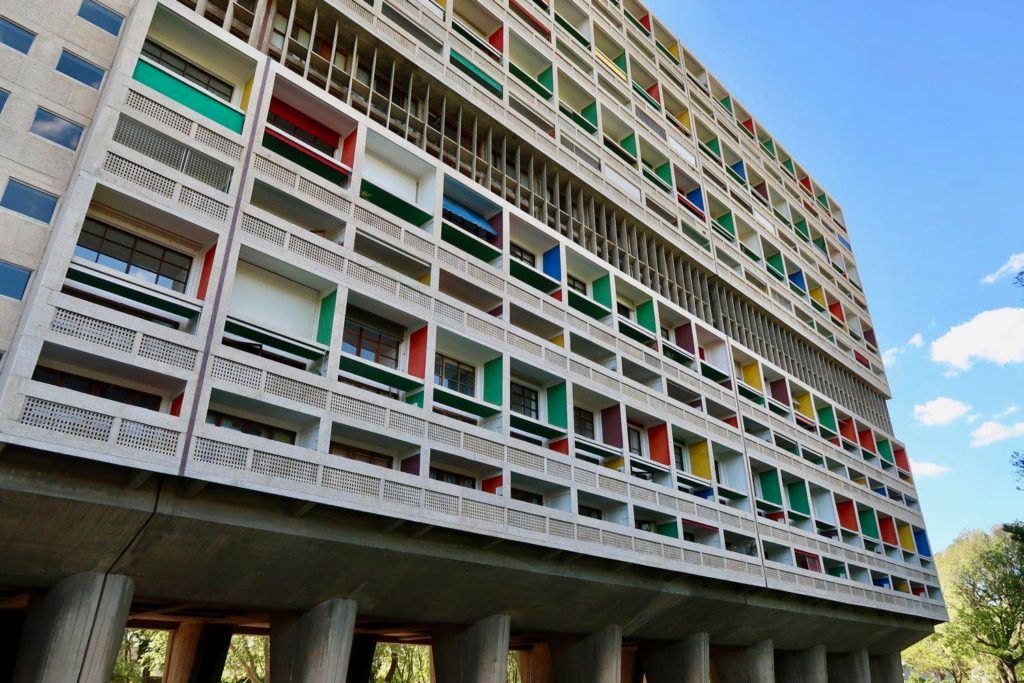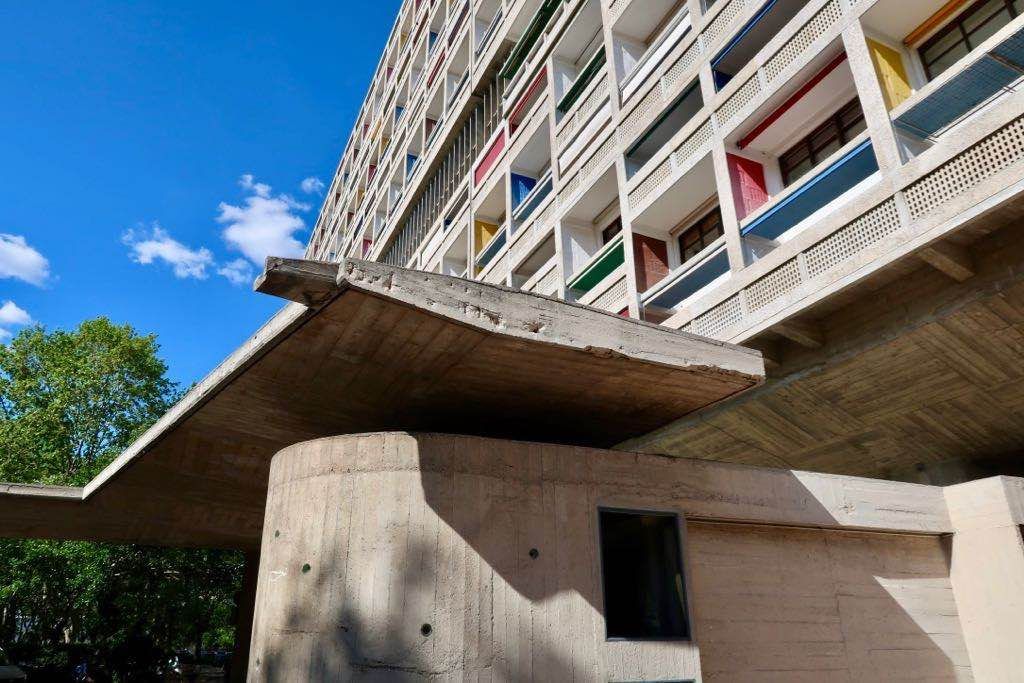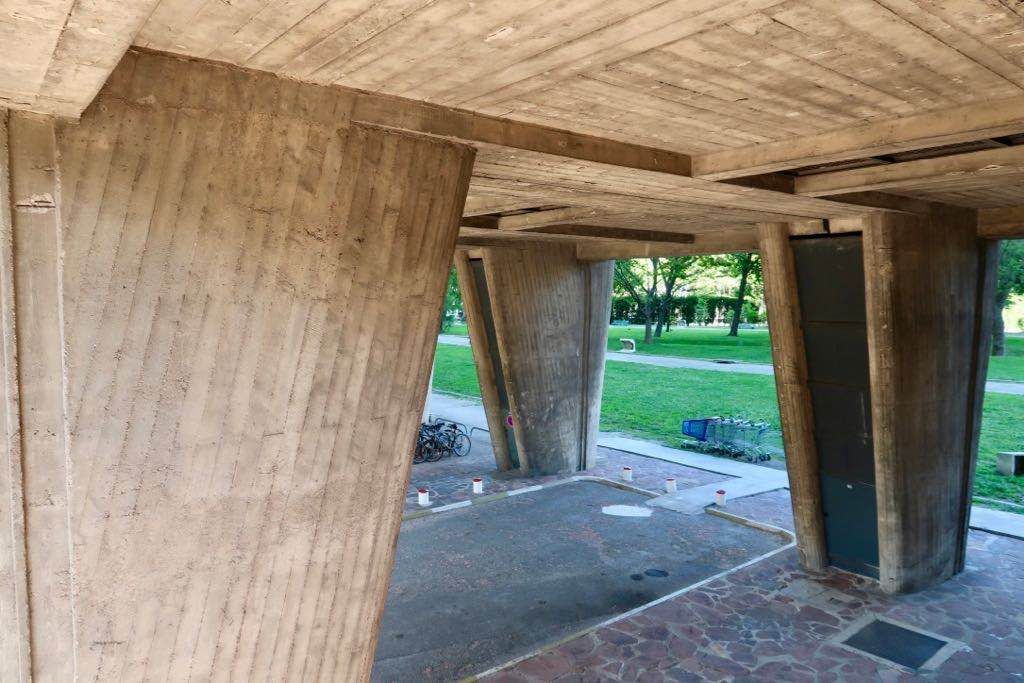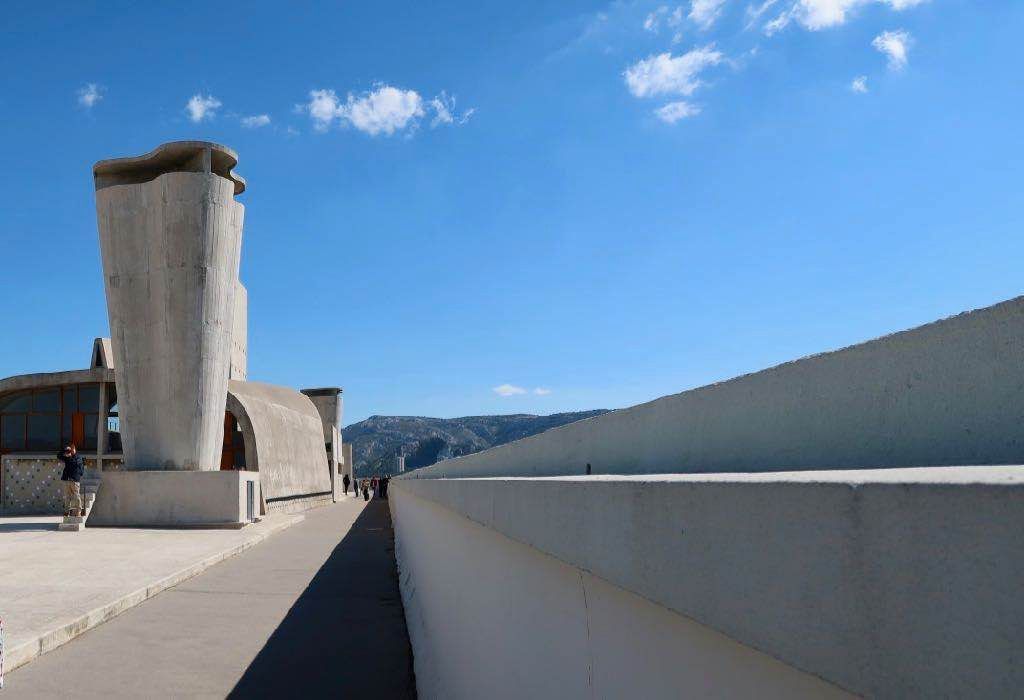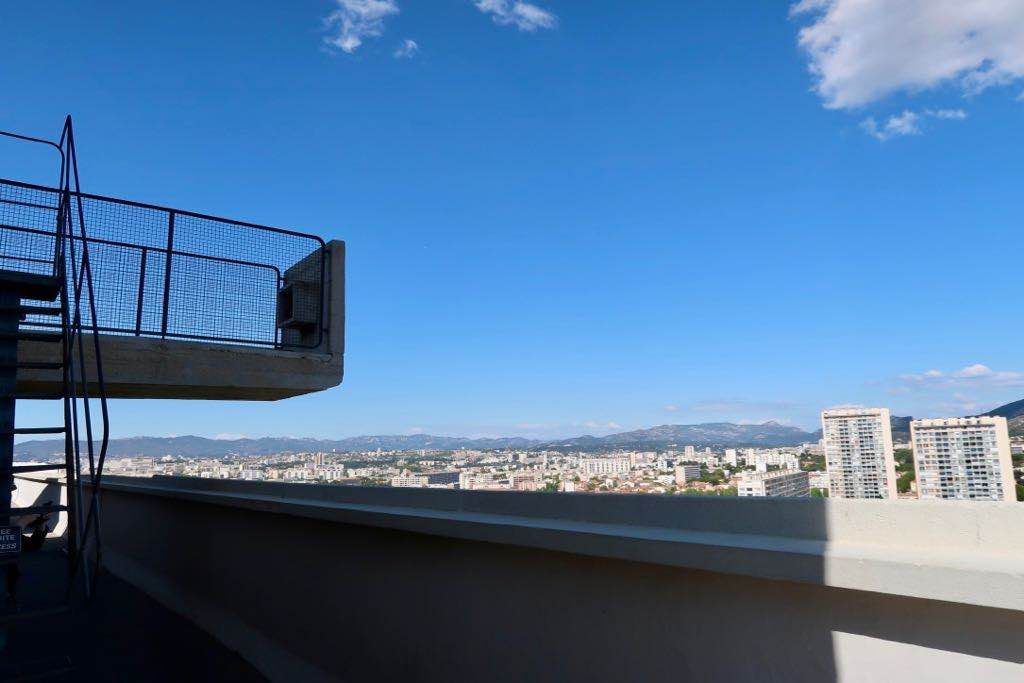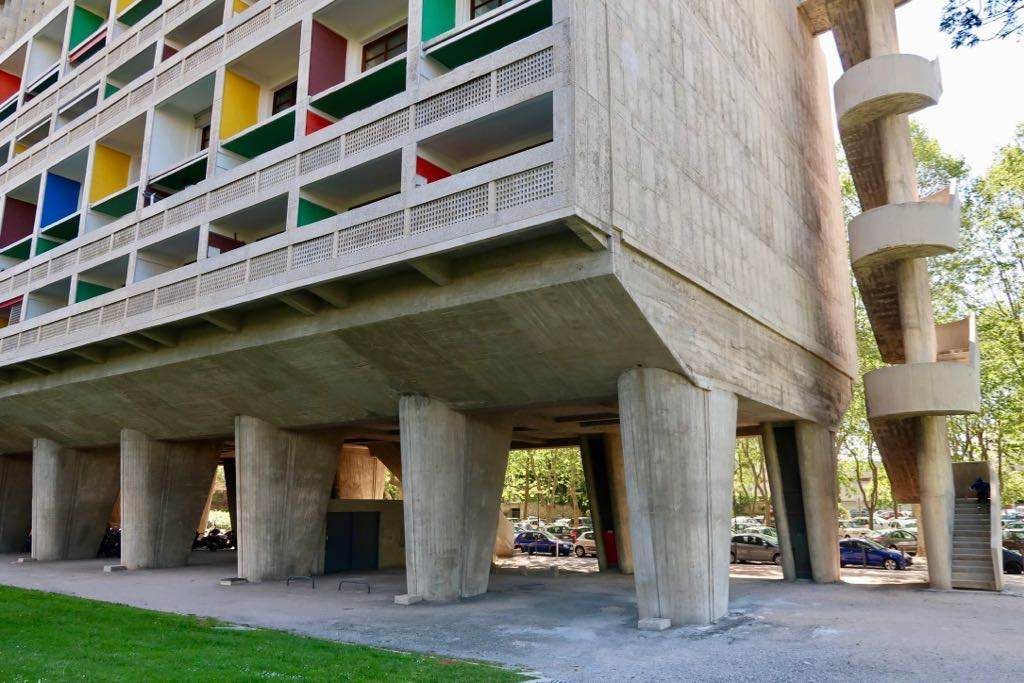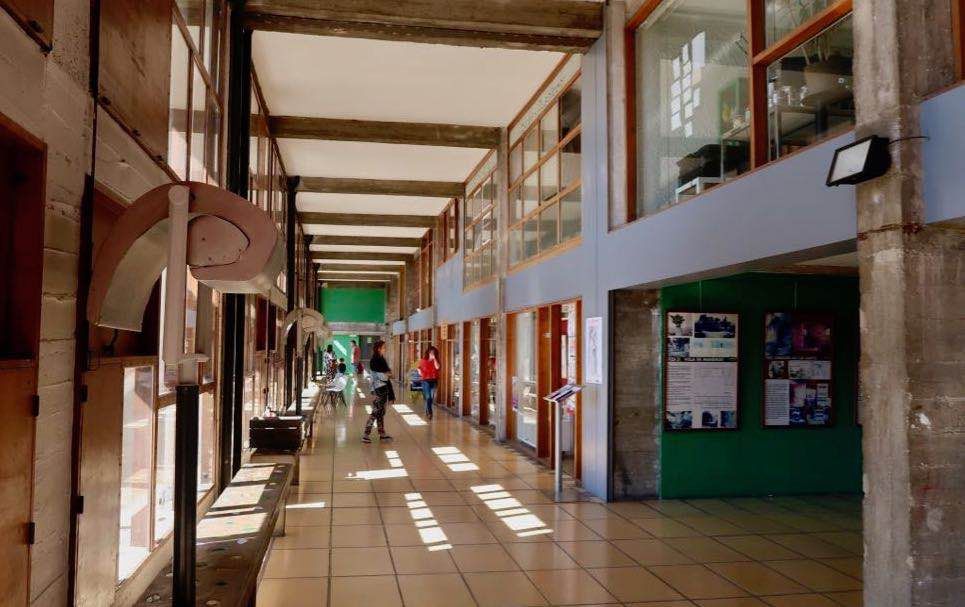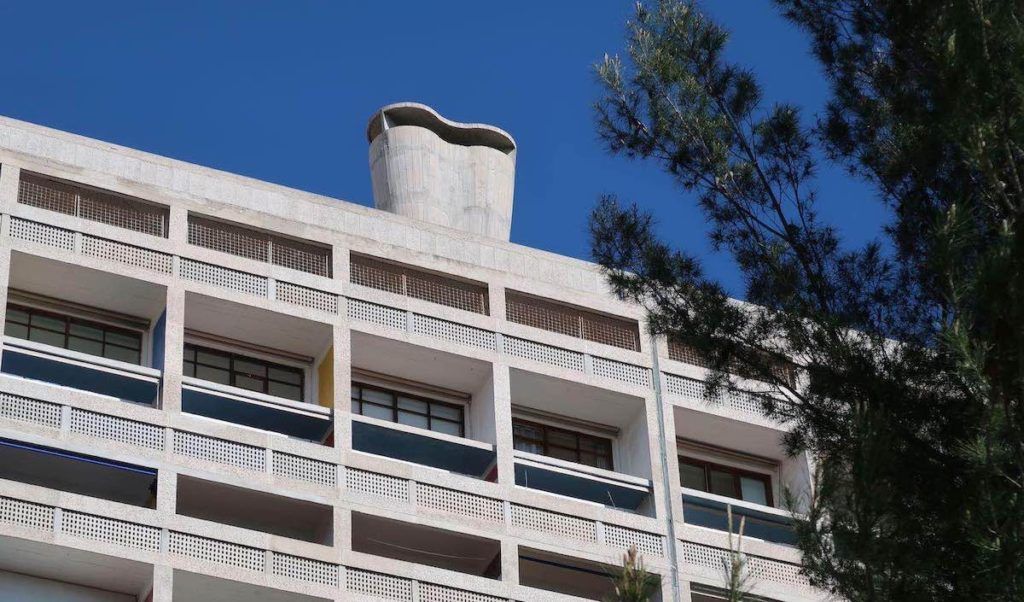Unité d’Habitation: The Brutalist Boat

Unité d’habitation
Key Information
- Name: Unité d’habitation
- Location: Marseille, France
- Architect: Le Corbusier
- Year: 1947-52
Introduction Le Corbusier’s first Unité d’Habitation
The Marseille Unitéd’habitation which literally means unit of habitation is the first of the series of experimental and futuristic housing blocks developed by the Architect Le Corbusier after WWII. It became one of the most influential Modernist buildings of all time with countless iterations tried by other Architects all over the world and developed in different directions and with different levels of success.
Corbusier himself built four more Unité d’Habitations in Europe. The Rough concrete he used ‘béton brut’ became the signature of the style known as Brutalism. Simply put if you are are interested in Modern Architecture or the History of Architecture this is one of the buildings you should know.
The Architect Le Corbusier
Le Corbusier was one of the founders of the modern movement, 17 of his projects in 7 countries (including this one) are listed by the UNESCO World Heritage collection as of being cultural significance. He was born in Switzerland as Charles-Édouard Jeanneret-Gris (born 1887- died 1965). Shortly after WWI in Paris he published his 5 points of Architecture which acted as key concepts for the generation of his projects summarised below:
- Raise the building on “pilotis,” freeing the walls of their structural function.
- With the walls freed of their structural role, a free plan should be employed.
- Similarly, the facade should be designed freely.
- The horizontal ribbon window, enabled by the free facade, should be used to light rooms evenly.
- The roof should be flat and host a roof garden, replacing the ground space that is occupied by the building.
Le Corbusier’s Modular System
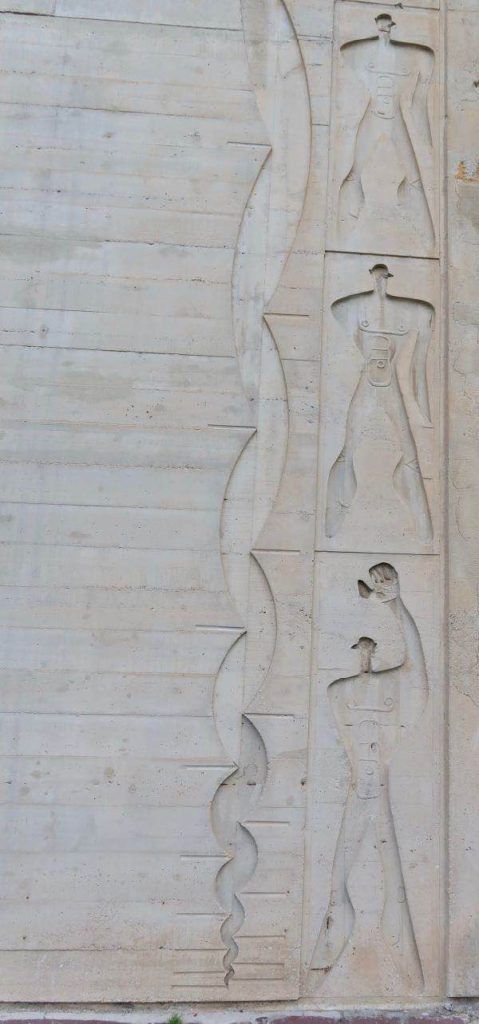 Modular system cast into the side of the building.
Modular system cast into the side of the building.
Le Corbusier developed a module based on the proportions of the human body. He published his two books on this system Le Modulor in 1948, and Modulor 2 in 1955 but it was in the Marseille Unité d’Habitation project in which he used it and developed it conceptually to a fully rounded system. Modular man is even cast into the side of the building like a signature.
Of the five Unités that Corbusier designed and saw built it is only the Unité in Marseille that is planned out completely according to his modulor. For example the Berlin Unité was built after Marseille (1956 -1958), but Le Corbusier’s modular was ignored for many of the interior dimensions.
Just one example was that the floor to ceiling level was raised past the Modulor’s height to 260cm. This maybe helps to explain why the modular didn’t catch on as the Modulor’s 230 cm floor to ceiling height is just too low for today standards.
“a machine, a piece of furniture or a newspaper are extensions of man. And architecture, and as a result every object created for man, must not only impact on a mental or emotional level but also on a more physical or bodily level”.
-Le Corbusier

Unité d’habitation by Le Corbusier
Project Inseption
Marseille the focus of much combat at the end of the war was in dire need of housing. Corbusier was contacted by the Minister of Reconstruction and Urban Planning and was given a commission for one of his collective houses. Corbusier accepted on condition he didn’t have to comply with all the current building regulations. This is quite incredible that an Architect would be allowed a free hand like this and shows the dire need for housing at this time that such a condition was accepted. But it allowed Corbusier to enact his modular system and test it out on site.
Influences
This building was influenced by other works and is of it’s time, some of the key ones are below;
- Dom Komuny Narkofim built 1928-29 by Moise Guinzbourg and Ignace Milinis in Moscow with it’s split level apartments and interior street.
- Ludwig Hilberseimer in his 1924 concept of a ‘vertical city’ which clearly shows the division of served and service space of car below and raised pedestrian streets above with apartments above that.
- The Bergpolderflat in Rotterdam by W. de Tijen, Brinkman and Van der Vlugt, the first gallery flat in the Netherlands.
Set in the Landscape
’The ’street’ as we know it has now disappeared. All the various sporting activities take place directly outside people’s homes, in the midst of parks- trees, lawns and lakes. The city is entirely green; it’s a Green City. Not one inhabitant occupies a room without sunlight; everyone looks out on trees and sky’
Le Corbusier, La Ville Radieuse 1964 .p94.
The building site is left over mostly to a park and parking lot. Thus the building is set back from the public street and infact is orientated North/ South not in accordance to the street but with the views, and nature. Corbusier quite deliberately turned his back on the street and by extension the city.
The building is then set up on massive monumental pilotis. So the park can run through underneath the building and all the residents can get views out over the park and to the sea or the mountains surrounding Marseille.
Description
At 165m long, 24m wide and 56m high it sets an imposing presence in the landscape. Its monumental pilotis and imposing concrete facades sitting as they do in a park give it a imposing sculptural feel. The roof is entirely given over to public shared space with elements on top that are highly sculptural.
The buildings elemental feel is reinforced by the raw concrete finish poured against rough wooden formwork to leave an imprint of the wood on the concrete. This ‘béton brut’ look literally started and embodies the style of Brutalism. Le Corbusier made a great choice to make a virtue out of necessity as in a postwar France there was not enough steel available to make the smooth steel formwork that would have given the concrete a completely different look. Quoting Corbusier (via gallinsky):
…I have decided to make beauty by contrast. I will find its complement and establish a play between crudity and finesse, between the dull and the intense, between precision and accident. I will make people think and reflect, this is the reason for the violent, clamorous, triumphant polychromy of the facades.
Le Corbusier

Unité d‘Habitation, Marseille, France, 1945. ©FLC/ADAGP
Facade Colors
Part of the contrast with the raw concrete finish of the facade are the coloured side walls of the balconies of the Unité. The two complement each other well and bring balance and contrast to what would otherwise be a monotonous elevation. This might be another element Le Corbusier was first to bring to a large communal housing block.
Colors within the interiors were also planned out wall. aches, kitchen units and built in furniture was a colored according to Corbusier’s design. These however have been changed and changed again as the different families and inhabitants of the blocks have repainted or modernised the units.
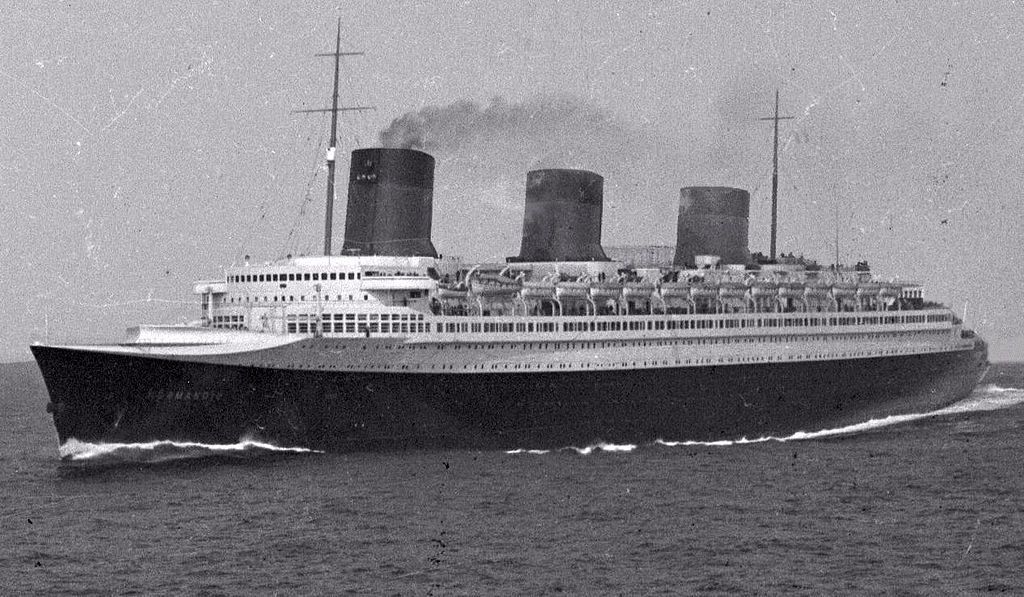
Photo of The Normandie one of the most luxurious ocean liners of it’s time.
Building Layout
There are 337 apartments and 23 different types of layout. The internal streets occur once every three floors with most of the apartments having double height spaces and having an outlook to the east and the west facade. The exception to this is the shopping street on the 7th floor which is double height and is clearly articulated on the outside facades. The roof is a shared space for the residents providing stunning views over Marseille.
The programme of the building with it’s interior street complete with shops and roof space with a swimming pool, running track, outdoor gym and crèche redefined high-density housing by reimagining a whole town within an 18-storey slab block. If it looks a little like a cruise ship then that is no accident.
‘The steamship is the first stage in the realisation of a world organised according to the new spirit’
Le Corbusier
The 1924 edition of Le Corbusiers book Vers Une Architecture (“Toward an Architecture”), his manifesto for Modern architecture, has an image of a ship on its cover, and photos comparing his building’s designs to ships.
Le Corbusier was a frequent steamship passenger, traveling aboard the Lutétia, the Patris II, and the Normandie, unquestionably the most sumptuous passenger ship ever built. The Normandie had a profound impact on how Le Corbusier viewed architecture. He was intrigued by a ship’s ability to be both functional and beautiful. Ocean liners were self-contained cities wrapped in a sleek and elegant package. To a modernist architect, “ocean liners demonstrated the potential of highly-serviced mega structures to provide ideal living conditions.”
Heather Shimmin
So we can look at the Unité as what it was a kind of doppler of an ocean liner, of a cruise ship typology applied to a city apartment block. The idea of a self contained modern spacious and clean building floating above the ruins of a broken city after the devastation to Marseille of the war must have appealed.
Apartment Plans
There are some south facing apartment plans but the majority face East West. Though there are some 23 different apartment layouts 2 double floor mirrored ones form the majority of the apartments and are the ’standard’. Corbusier called these the upper E apartment and the lower E apartment.
They embody the key elements of of what Corbusier wanted to incorporate into Unité. They are split level with a double height space and they run the full width of the building so they have a Westerly and Easterly outlook. The apartments because they have double outlooks have the chance of cross ventilation. They are meant for families with a master bedroom and two smaller bedrooms.
The Southern facing apartments have a more standard single aspect and facing the way they do really required the ‘brise-soleil’ of the main facades.
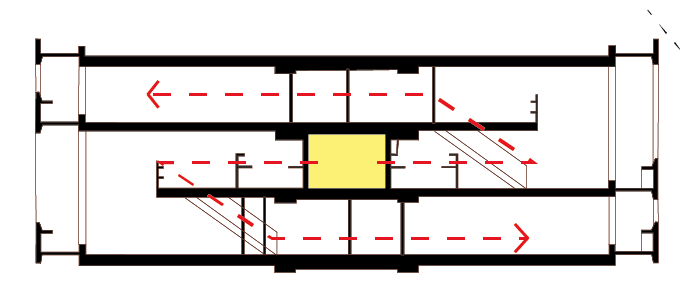
Corridor in yellow with apartments shown interlocking on either side. Image by Finn Harries
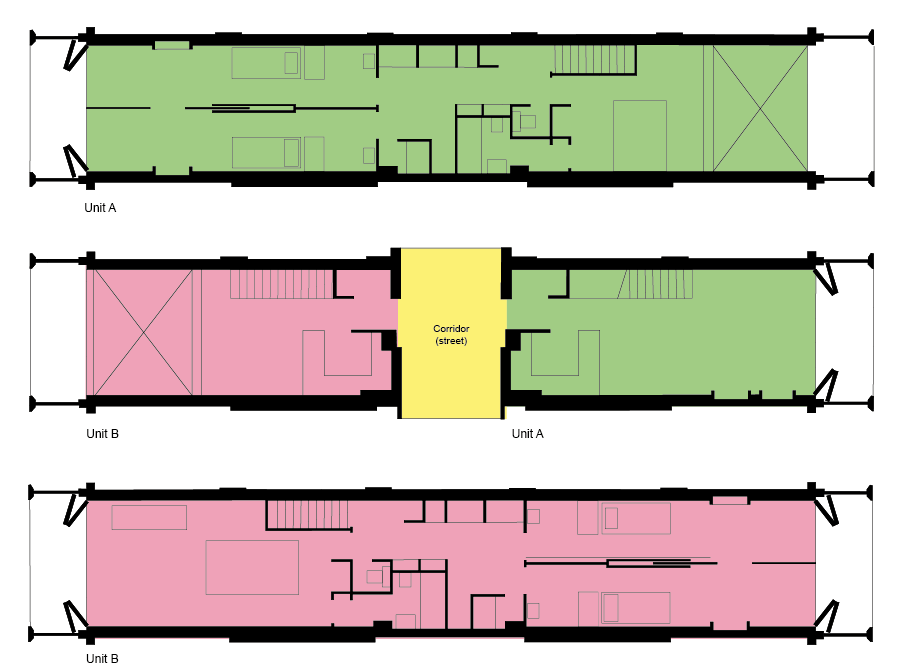
Kitchens beside the entrances just off the corridor. Image by Finn Harries
The Mirror Problem
The problem with the mirrored apartments is they aren’t actually a mirror of themselves and the layouts are compromised as a result. To keep the service cores through the building Corbusier flipped the division between the living and sleeping areas between the lower and upper E apartment types. So see the upper E below. The spaces flow in a nice way. Kitchen, Dining and Living room on the same floor with a double height space. The bedrooms are above a little more private.
Lower E however works not so well. The Kitchen and dining are on the top floor overlooking the living room which is in the same space as the master bedroom! For a family apartment with supposedly two children this is a massive, maybe fatal compromise.
As a fix some residents tried to ‘correct’ this problem by extending the mezzanine floor out to the window line. This meant there was space to have the living room beside the kitchen and dining space. However now there is no double height space and with a floor to ceiling height of only 2.26m that’s not nice. Also residents who made this change reported problems with the cross ventilation of the apartments causing overheating.

Colored glass near the entrance.
Dark Corridor
So the corridors or raised streets illustrate another problem. As the block has apartments on the East, West and South sides there is only a chance of natural light to the internal streets where the stairs and lift cores meet the street and the North elevation at one end. But here Corbusier choose to keep the elevation plain with no windows. Probably the desire to impose the massive aesthetic of a plain North facade has won out over the common sense of putting a window at the end of a corridor here, nice!
Inspiration for Brutalism
Something in the buildings aesthetic never mind its planning struck a chord in Europe and the West. A few years after Unité was finished the British architects Alison and Peter Smithson coined the term ‘Brutalism’ in 1953, taken directly from the French term béton brut, or “raw concrete”, the word used by Le Corbusier to describe Unité. Then in the book The New Brutalism: Ethic or Aesthetic?critic and author Reyner Banham used the word to identify a new style taking route in Europe and America on both sides of the Iron Curtain.
Criticism
With his 5 points of Architecture, his modular system and his use of new materials and technology Corbusier’s Unité is a ground up approach to the problem of mass housing and even of city planning. It was extremely radical for it’s day and pulled together the latest thinking, technology and inspiration of it’s time while throwing out much that Corbusier thought was irrelevant. This is why it’s important, like it or hate it it’s a step change in the evolution of mass housing and planning. Yes and it’s directly analogous to a cruise ship both good and bad.
Unité is self contained and comfortable for the residents, but it’s unconnected with the city, set apart and floating by itself. If a city were made of these buildings its almost possible the city itself would disappear and there would be in its place just a network of services running between a set of these separate housing ships.
It’s a little strange that Corbusier living in Paris the home of ‘le flâneur’ the city that embodies the life of the street as much as any other place utterly turns his back on it. The imposition of a system that on a grand scale would isolate and divide people and do away with much of the wonder of the city for the sake of what exactly? I have quoted Peter Blake Architect and critic below in an interview he gave in 1977;
Have architects fulfilled these goals?
Not very well. The modern cities that resulted have produced traumas of a horrendous nature. They make no sense in terms of the way people live. Architects such as Mies van der Rohe and France’s Le Corbusier were abstract artists, really. They produced symbols of a new world, a new age, a new life-style. It never occurred to them that people would have to live, work and make love in those spaces.
Can you give an example?
One of the most intriguing is Le Corbusier’s apartments [Unité d’Habitation] built in 1952 at Marseilles, France. The apartments are beautiful, but the children’s rooms are mere closets, six feet wide, some with no windows. This was great for an artist and his mistress, but for kids there was no privacy—and no place to go but out. But then Le Corbusier didn’t have children. He described his works as “pure prisms raised against the sky”—a beautiful image, but not related to the way people lived inside them. -
Some Conclusions
The design is beautiful like a piece of sculpture an imposing block of concrete considered and stark. Corbusier tried to capture the future and bottle it, but like a boat caught in a bottle it wasn’t flexible enough. Moreover it didn’t really match the socio-economic conditions that developed in the post war period in which the car and the suburban model made an apartment block like this an edge case.
It was however adapted badly across the West and Soviet Union but without the double height spaces or the park below or the communal facilities that still make it special. In other words mostly the best things conceived in Unité were not copied.
Now perhaps more than ever it’s a well loved and cared for building and if someone would build another one with a wider apartment module and cleverer dividing of the core then airy apartments with much more potential than most modern apartments might be realised.
How to Visit
The Unité d’habitation address is 280, boulevard Michelet, 13008 Marseille on the South side of Marseille. Parking is available within the building’s grounds. Booking is required and a free tour or guided tour is available. Check the Marseille tourist website page for the latest times of opening and details about tours.
You can in addition to visiting actually stay there the Hotel Le Corbusieris inside the building and you can stay there or pop into the Hotel bar after your visit to the building. The residents also keep an association site about the building.
References
- Le Corbusier and the Ocean Liner
- Gallinsky on Unité d’habitation
- Misfits Writing About L’Unité
- Solar House History - Speculative Redesign: Unité d’Habitation
Books
L’unité d’habitation de Marseille by Jacques Sbriglio
Photos
